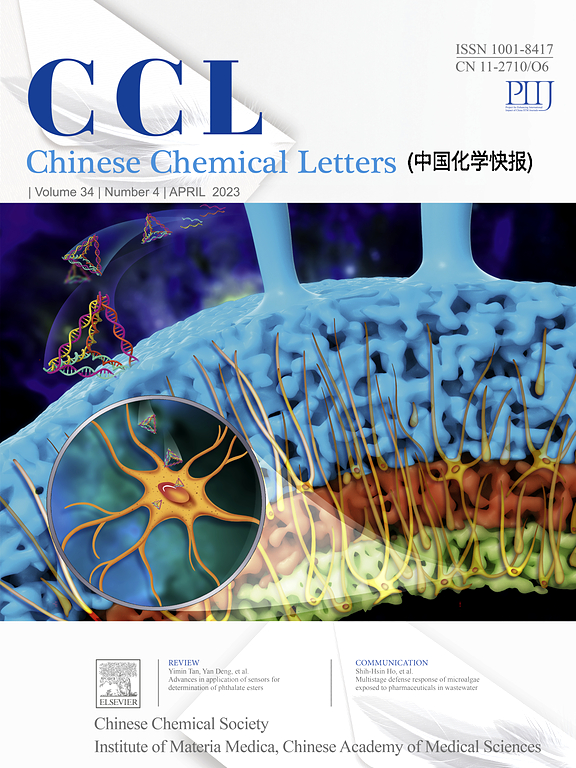Amplifying STING activation and immunogenic cell death by metal-polyphenol coordinated nanomedicines for enhanced cancer immunotherapy
IF 9.4
1区 化学
Q1 CHEMISTRY, MULTIDISCIPLINARY
引用次数: 0
Abstract
Ferroptosis in combination with immune therapy emerges as a promising approach for cancer therapy. Herein, dual-responsive metal-polyphenol coordinated nanomedicines were developed for pH/glutathione (GSH)-responsive synergistic ferroptosis and immunotherapy. Our innovative strategy involves the development of a manganese-polyphenol coordinated nanostructure, leveraging the biocompatibility of bovine serum albumin (BSA) as a template to encapsulate the anticancer drug sorafenib. The tumor microenvironment (pH/GSH) prompts the disassembly of MnO2 and epigallocatechin gallate (EGCG), thereby releases the anticancer payload. Concurrently, MnO2 acts to deplete intracellular GSH, which in turn suppresses glutathione peroxidase activity, leading to an accumulation of lipid peroxides with cell ferroptosis. Additionally, the release of Mn2+ ions bolster the cyclic guanosine monophosphlic acid (GMP)-adenosine monophosphlic acid (AMP) synthase-stimulator of interferon gene (cGAS-STING) pathway, which, in conjunction with the immunogenic cell death (ICD) effect induced by tumor cell apoptosis, significantly promotes dendritic cell (DC) maturation and enhances the presentation of tumor antigens. This successively ignites a robust innate and adaptive immune response. Both in vitro and in vivo experiments have demonstrated that the concurrent administration of ferroptosis-inducing and immune-stimulating therapies can significantly inhibit tumor growth.

求助全文
约1分钟内获得全文
求助全文
来源期刊

Chinese Chemical Letters
化学-化学综合
CiteScore
14.10
自引率
15.40%
发文量
8969
审稿时长
1.6 months
期刊介绍:
Chinese Chemical Letters (CCL) (ISSN 1001-8417) was founded in July 1990. The journal publishes preliminary accounts in the whole field of chemistry, including inorganic chemistry, organic chemistry, analytical chemistry, physical chemistry, polymer chemistry, applied chemistry, etc.Chinese Chemical Letters does not accept articles previously published or scheduled to be published. To verify originality, your article may be checked by the originality detection service CrossCheck.
 求助内容:
求助内容: 应助结果提醒方式:
应助结果提醒方式:


